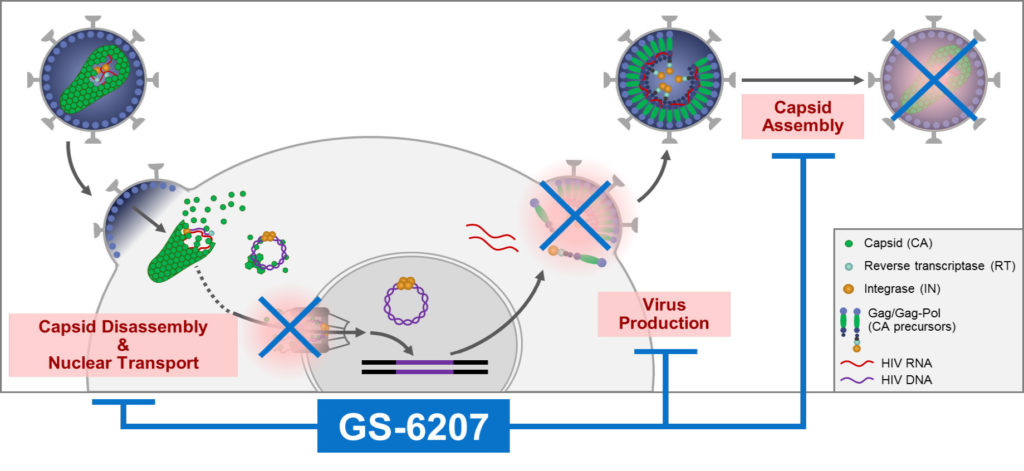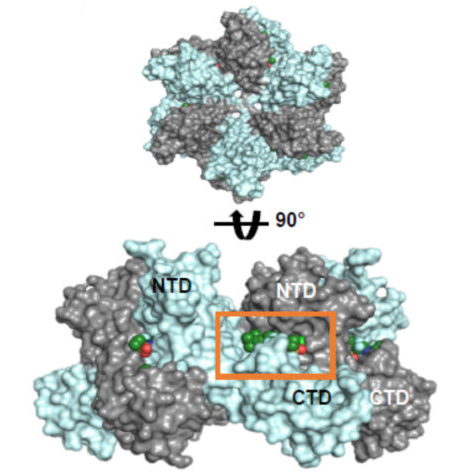 Using Berkeley Center for Structural Biology (BCSB) beamline 5.0.1, researchers from Gilead Sciences investigated a promising small-molecule drug, GS‑6207, that they developed to inhibit replication of the human immunodeficiency virus (HIV). Most HIV drugs work by blocking viral enzymes—proteins that initiate key steps in the viral life cycle. In contrast, GS‑6207 works by targeting the HIV-1 capsid protein (CA), a structural protein that forms pinwheel-like hexamers that assemble into a conical shell (a capsid) around the viral genome. Drawing on earlier X-ray protein crystallographic information that they collected at the Advanced Light Source (ALS), Gilead researchers designed GS‑6207 to bind tightly between CA monomers, where it would interfere with multiple phases of the viral replication cycle. BCSB beamline scientists performed protein crystallography experiments on single crystals of HIV CA hexamers co-crystallized with GS‑6207. The resulting structure provided the molecular details of interactions that established the tight fit of GS‑6207 to HIV CA proteins, as originally designed. If successful in clinical studies, the drug could avoid issues of resistance while imparting longer-lasting viral suppression, enabling a more manageable regimen.
Using Berkeley Center for Structural Biology (BCSB) beamline 5.0.1, researchers from Gilead Sciences investigated a promising small-molecule drug, GS‑6207, that they developed to inhibit replication of the human immunodeficiency virus (HIV). Most HIV drugs work by blocking viral enzymes—proteins that initiate key steps in the viral life cycle. In contrast, GS‑6207 works by targeting the HIV-1 capsid protein (CA), a structural protein that forms pinwheel-like hexamers that assemble into a conical shell (a capsid) around the viral genome. Drawing on earlier X-ray protein crystallographic information that they collected at the Advanced Light Source (ALS), Gilead researchers designed GS‑6207 to bind tightly between CA monomers, where it would interfere with multiple phases of the viral replication cycle. BCSB beamline scientists performed protein crystallography experiments on single crystals of HIV CA hexamers co-crystallized with GS‑6207. The resulting structure provided the molecular details of interactions that established the tight fit of GS‑6207 to HIV CA proteins, as originally designed. If successful in clinical studies, the drug could avoid issues of resistance while imparting longer-lasting viral suppression, enabling a more manageable regimen.
Read the ALS Science Highlight.




